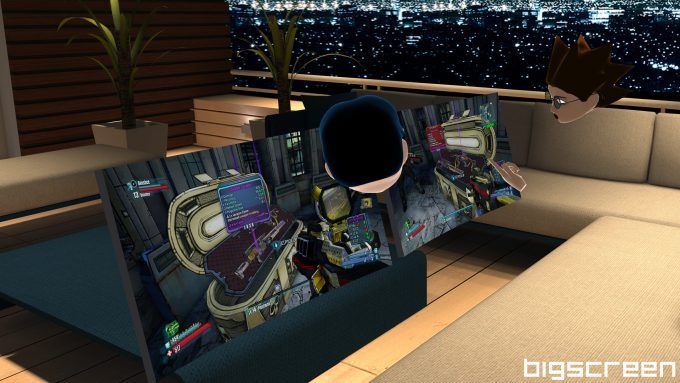 Bigscreen VR announced that they raised $3 million dollars for their “social utility” VR application. Bigscreen gives you access to your computer screen in VR, which is a deceptively simple idea but one that is unlocking new ways of working on your computer and enabling collaborative social environments that range from virtual 2D video game LAN parties to productive work meetings.
Bigscreen VR announced that they raised $3 million dollars for their “social utility” VR application. Bigscreen gives you access to your computer screen in VR, which is a deceptively simple idea but one that is unlocking new ways of working on your computer and enabling collaborative social environments that range from virtual 2D video game LAN parties to productive work meetings.
LISTEN TO THE VOICES OF VR PODCAST
Audio PlayerI had a chance to catch up with founder Darshan Shankar at Oculus Connect 3 last October to talk about his founding story, and how he’s designed Bigscreen with privacy in mind through encrypted peer-to-peer networking technology that he developed. It’s a formula that seems to be working since he reports that “power users spend 20–30 hours each week in Bigscreen,” making it what Shankar calls, “one of the most widely used ‘killer apps’ in the industry.”
Those are astounding numbers for any social VR application, and the key to Bigscreen VR’s success is that they’ve been providing a more immersive and social experience of 2D content ranging from games to movies, and pretty much anything else you can do on your home computer.
The latest release of Bigscreen enables you to have up to three monitors in VR, which could provide an even better experience of working on your computer than in real life. You can stream Netflix or YouTube on a giant movie screen while playing a video game, designing an electrical circuit, browsing Reddit, or creating a 3D model in Maya. In Bigscreen, you can basically do anything that you can do on your computer screen, but in VR.
 The limited resolution of today’s headsets for comfortably reading text is the biggest constraint for now, but there are plenty of other tasks that people have found are more enjoyable in VR than in real life. It’s not just the immersive nature, improved focus, and unlocking the spatial thinking potential of your brain, but in Bigscreen you can do it with friends.
The limited resolution of today’s headsets for comfortably reading text is the biggest constraint for now, but there are plenty of other tasks that people have found are more enjoyable in VR than in real life. It’s not just the immersive nature, improved focus, and unlocking the spatial thinking potential of your brain, but in Bigscreen you can do it with friends.
Adding a social dimension to computing in a private way is one of the keys to Bigscreen’s success. You can use Bigscreen by yourself without anyone else; you can create a private room using peer-to-peer technology such that what you’re actually doing in Bigscreen isn’t even being passed through any servers on Bigscreen’s side. And if you want to have a public cafe experience and connect with hardcore VR enthusiasts from around the world, then create a public room and see who comes through. It’s a wide range of people looking to do everything from connect socially and casually to recreating the cafe experience of increased focus that can come from working in public spaces away from the private context of your home.
Taking that all into account and based upon my own direct experiences of using Bigscreen over the last couple of weeks I can say that Bigscreen VR is definitely the leading contender to becoming one of the first killer applications of VR. It’s a social utility with the potential to connect you to friends, family, romantic, and business partners, as well as complete strangers who spend a considerable amount of time living in the early days of the metaverse.
Support Voices of VR
- Subscribe on iTunes
- Donate to the Voices of VR Podcast Patreon
Music: Fatality & Summer Trip







